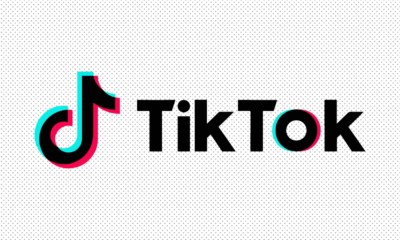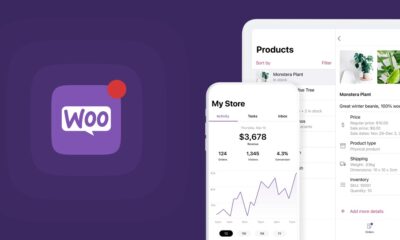Business
Digital Success: Balancing Organic and Paid Strategies for Enhanced Visibility and Growth


In the fast-paced world of digital marketing, finding the perfect equilibrium between organic and paid strategies, including LinkedIn Ad Optimization, is crucial for sustained success. As businesses navigate the ever-evolving landscape, understanding the nuances of both approaches becomes paramount.
Introduction
Digital marketers often grapple with the decision of allocating resources between organic and paid strategies, with a recent emphasis on optimizing LinkedIn Ads. Striking the right balance is not just a choice but a necessity for achieving holistic and sustainable growth.
Understanding Organic Strategies:
Organic strategies encompass the use of unpaid channels to reach and engage with the target audience. This includes content marketing, social media, and search engine optimization (SEO). The primary goal is to build a lasting online presence without the direct expenditure of advertising.
Exploring Paid Strategies:
Contrary to organic methods, paid strategies involve the use of financial resources for instant visibility. Pay-per-click (PPC) advertising, display ads, and sponsored content fall under this category. These strategies offer quick results but require ongoing investment.
Challenges in Balancing Both:
Finding the equilibrium between organic and paid strategies is not without challenges. Over-reliance on one approach, budget constraints, and the difficulty of measuring effectiveness are common hurdles that businesses face.
Strategies for Balance:
Achieving a harmonious blend of organic and paid efforts is an art. Integrating these strategies, leveraging data for informed decisions, and setting realistic goals are essential steps in the pursuit of balance.
Real-life Examples:
Numerous successful brands exemplify the art of balancing organic and paid strategies, including optimizing their presence on LinkedIn. Examining their approaches provides valuable insights into what works and what doesn’t in the dynamic digital landscape.
The Impact on SEO:
The symbiotic relationship between organic strategies and search engine optimization is undeniable. Organic efforts contribute significantly to improving search rankings, while paid strategies complement these efforts by providing additional visibility.
Navigating Social Media:
Social media platforms serve as both organic and paid marketing channels. Understanding the nuances of organic reach and strategically incorporating paid advertising, including LinkedIn Ads, are crucial for an effective social media presence.
Case Studies:
Analyzing case studies of companies excelling in balancing both strategies offers actionable lessons. These real-world examples showcase the practical application of a balanced approach to digital marketing, with a keen eye on LinkedIn Ad Optimization.
Tools & Resources:
In the digital era, various tools and technologies aid businesses in balancing their strategies. Understanding how to leverage these resources effectively can make a substantial difference in achieving and maintaining equilibrium.
Common Mistakes to Avoid:
Avoiding common pitfalls is as important as adopting the right strategies. Overlooking the importance of organic efforts or relying solely on paid strategies can hinder long-term success.
Future Trends:
Anticipating future trends in digital marketing is essential for staying ahead. Adapting strategies to embrace emerging trends ensures a business remains relevant in the ever-evolving landscape.
Expert Insights:
Gaining insights from industry experts through interviews provides a deeper understanding of the dynamics at play. Experts offer recommendations on finding a unique balance tailored to each business’s specific needs.
Conclusion
In conclusion, the delicate balance between organic and paid strategies, including a focus on LinkedIn Ad Optimization, is the key to unlocking digital success. As businesses evolve, so must their approach to digital marketing, finding the optimal mix for sustained growth and visibility.
FAQs
What is the primary difference between organic and paid strategies?
The primary difference lies in the use of financial resources. Organic strategies leverage unpaid channels, while paid strategies involve direct advertising expenditure.
How can businesses measure the effectiveness of their digital marketing efforts?
Measuring effectiveness involves analyzing key performance indicators (KPIs) such as website traffic, conversion rates, and social media engagement.
Are there any industries where paid strategies are more effective than organic?
Certain industries with high competition and time-sensitive campaigns may find paid strategies more effective for quick visibility.
Can small businesses with limited budgets successfully balance both strategies?
Yes, small businesses can balance organic and paid strategies by focusing on cost-effective organic methods and strategically investing in targeted paid campaigns.
What role do content marketing and SEO play in achieving a balance?
Content marketing and SEO are integral components of organic strategies, contributing to long-term visibility and improved search rankings.

 Model1 month ago
Model1 month agoTiffany Stratton: Biography, Wiki, Age, WWE Career, Net Worth, Before Fame, Boyfriend



 Technology2 months ago
Technology2 months agoHow to Send WooCommerce SMS Notifications for Orders





 Technology2 months ago
Technology2 months ago7 Essential TikTok Metrics to Track for Higher TikTok Views in 2025



 Technology1 month ago
Technology1 month agoTop 5 Tips for Using File Uploads in Your WooCommerce Store Efficiently

 Technology1 month ago
Technology1 month agoWhy Airlines Are Using Virtual Reality Services for Pilot Training





 Technology1 month ago
Technology1 month agoExploring TikTok AI: My Experience Making a Video With Only Artificial Intelligence



 General1 month ago
General1 month agoThe Hidden Costs of a DUI & How a Lawyer Can Help You Avoid Them

 Technology4 weeks ago
Technology4 weeks agoHow 3D Modeling Transforms AR Experiences for Online Furniture Stores?








You must be logged in to post a comment Login